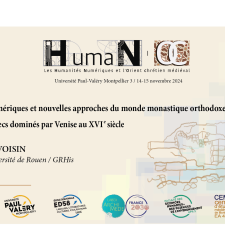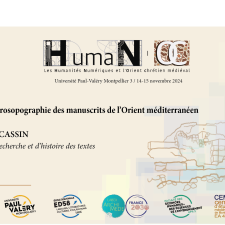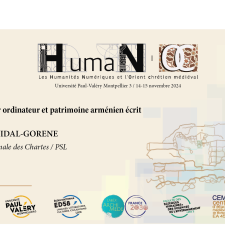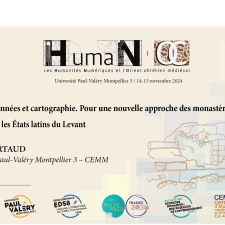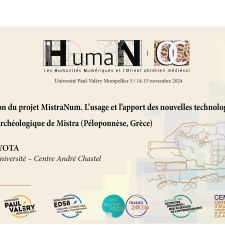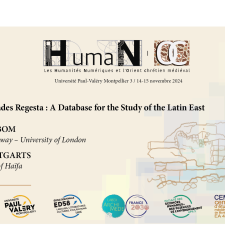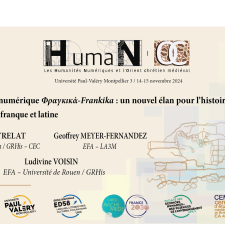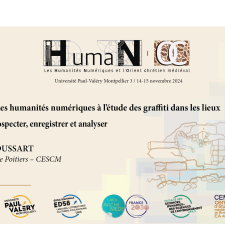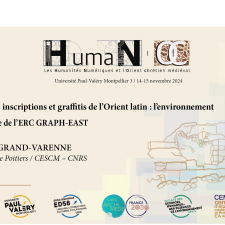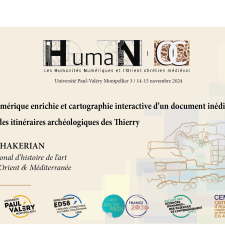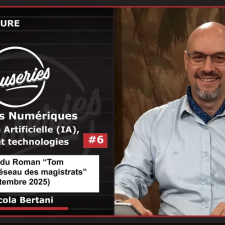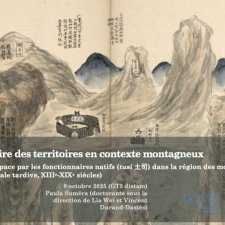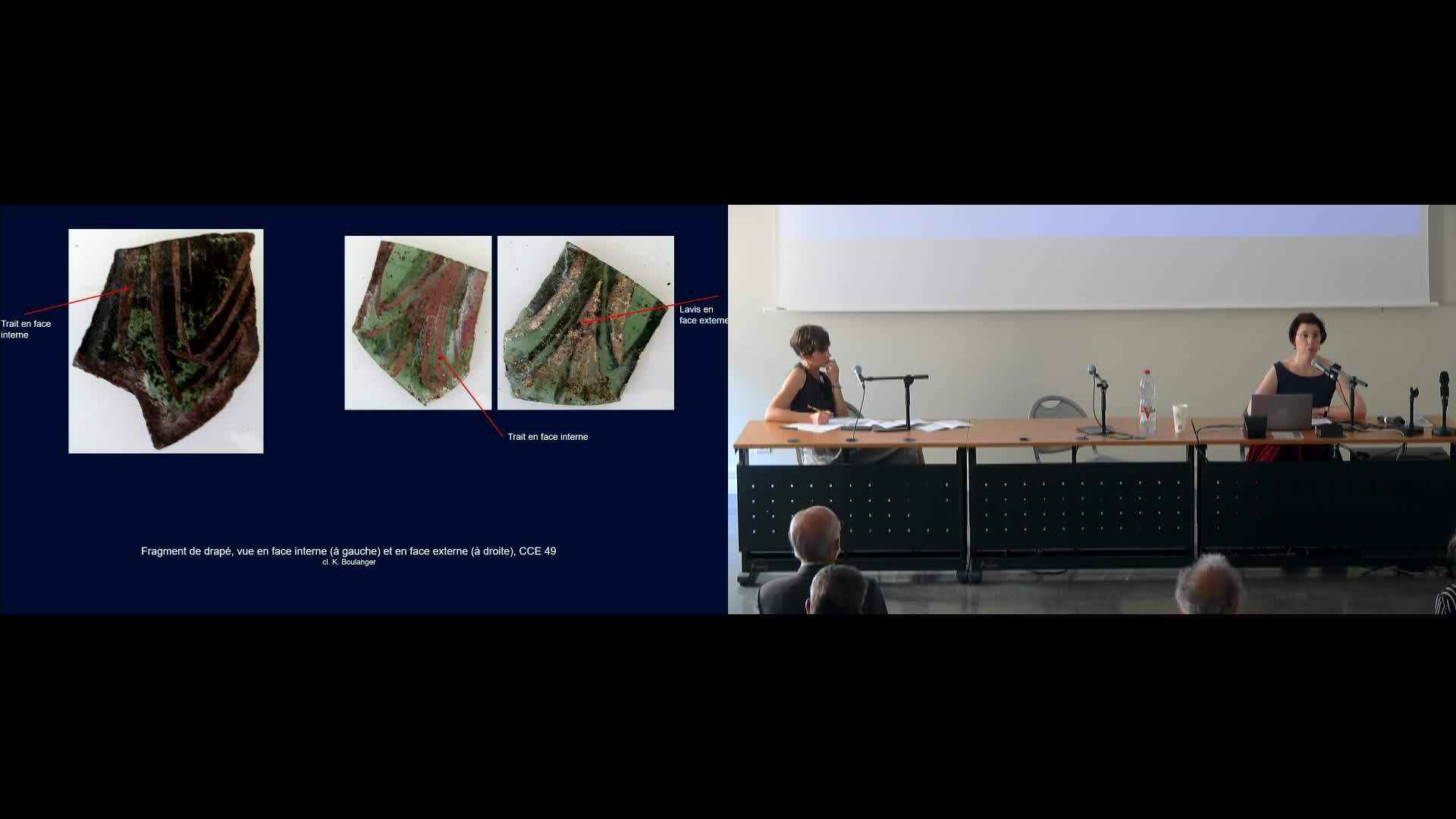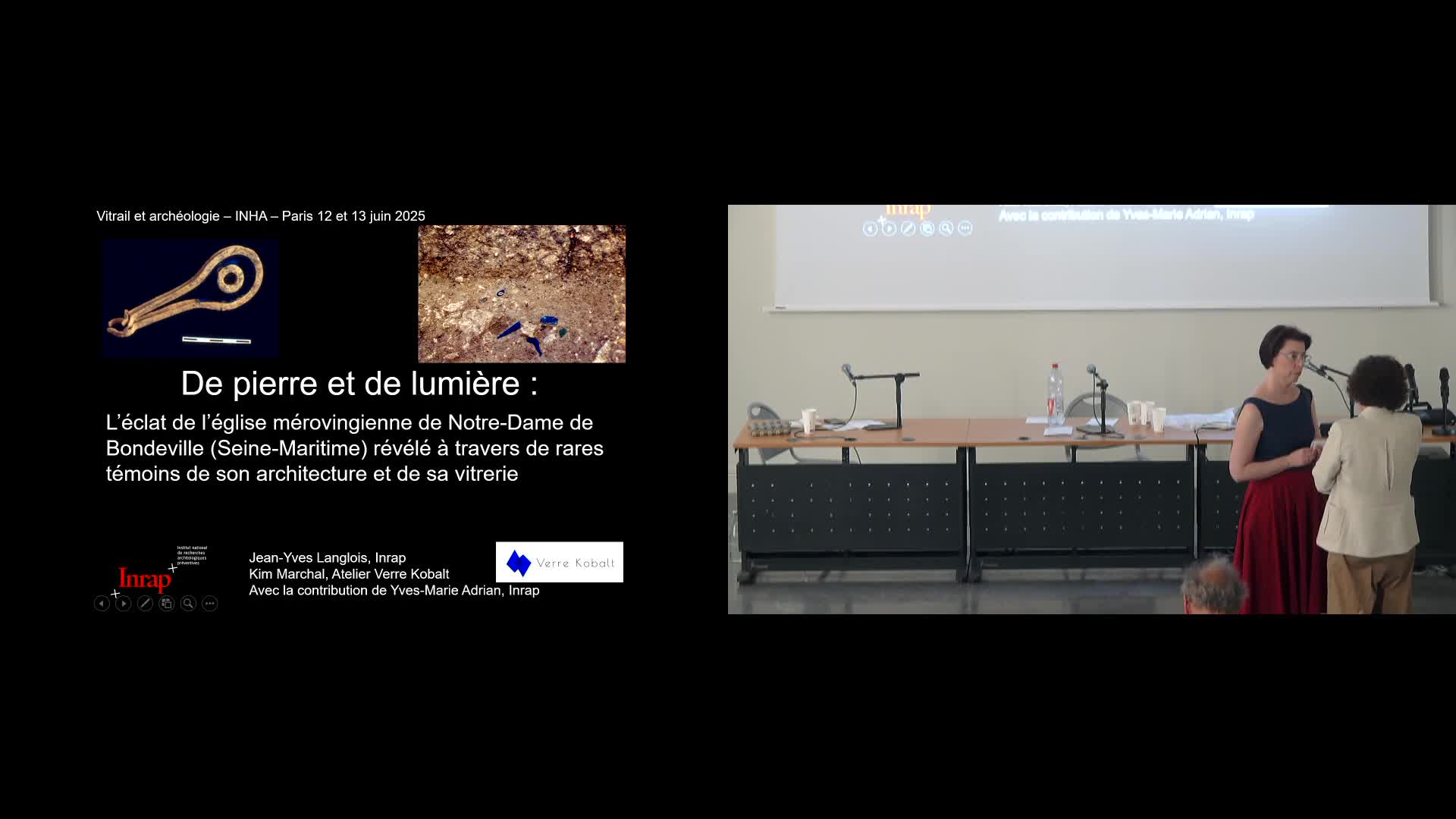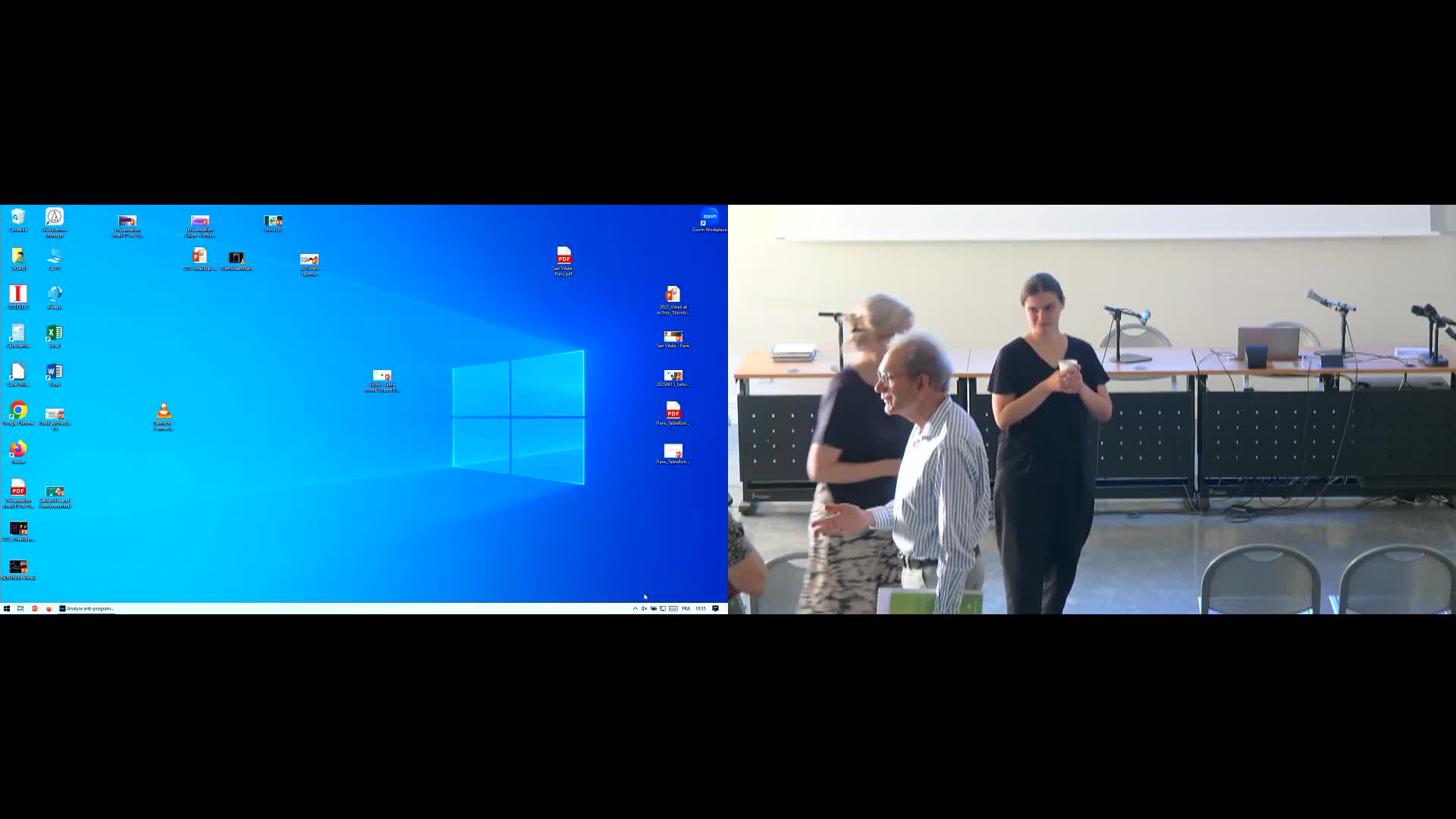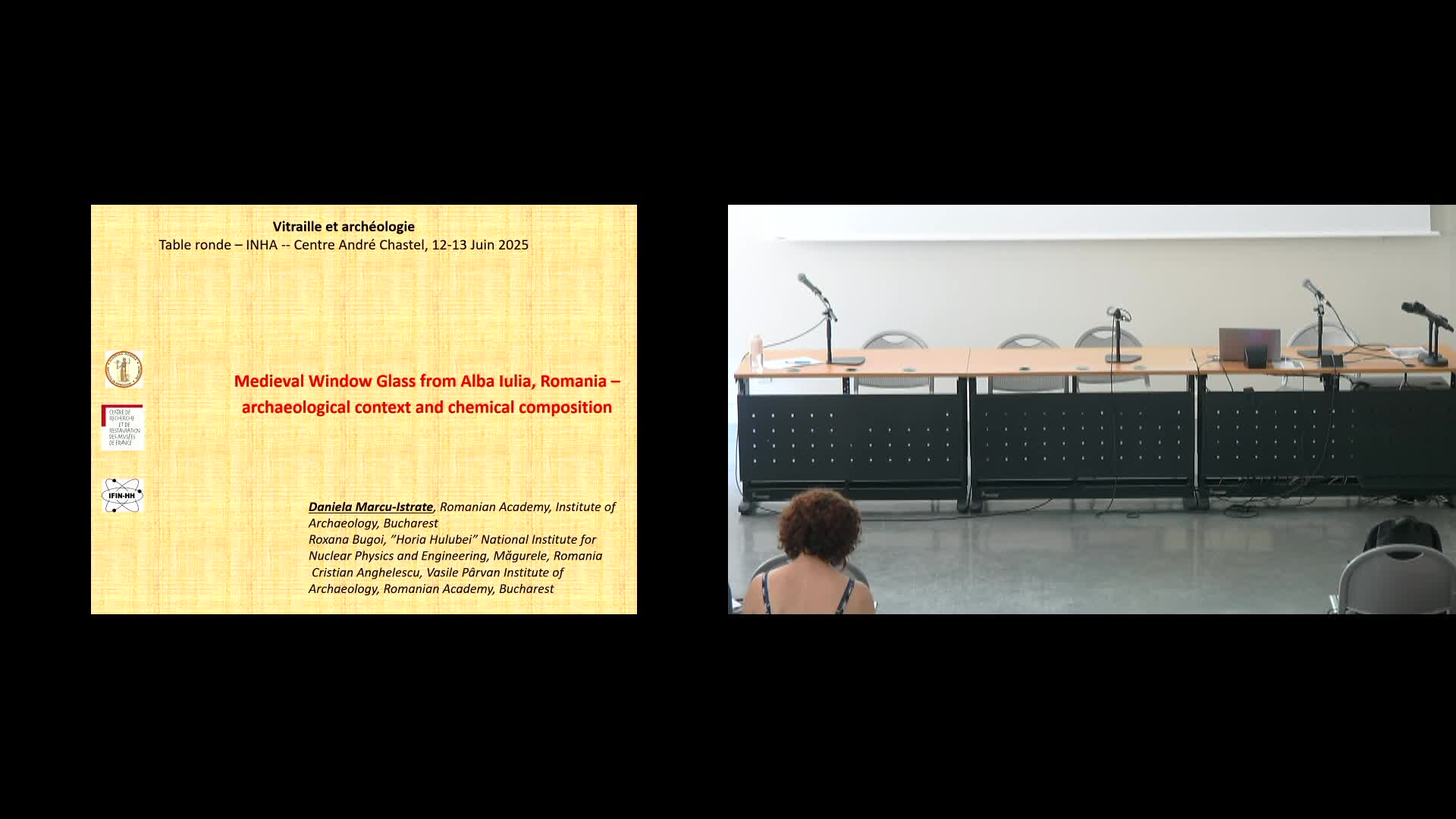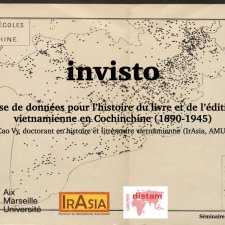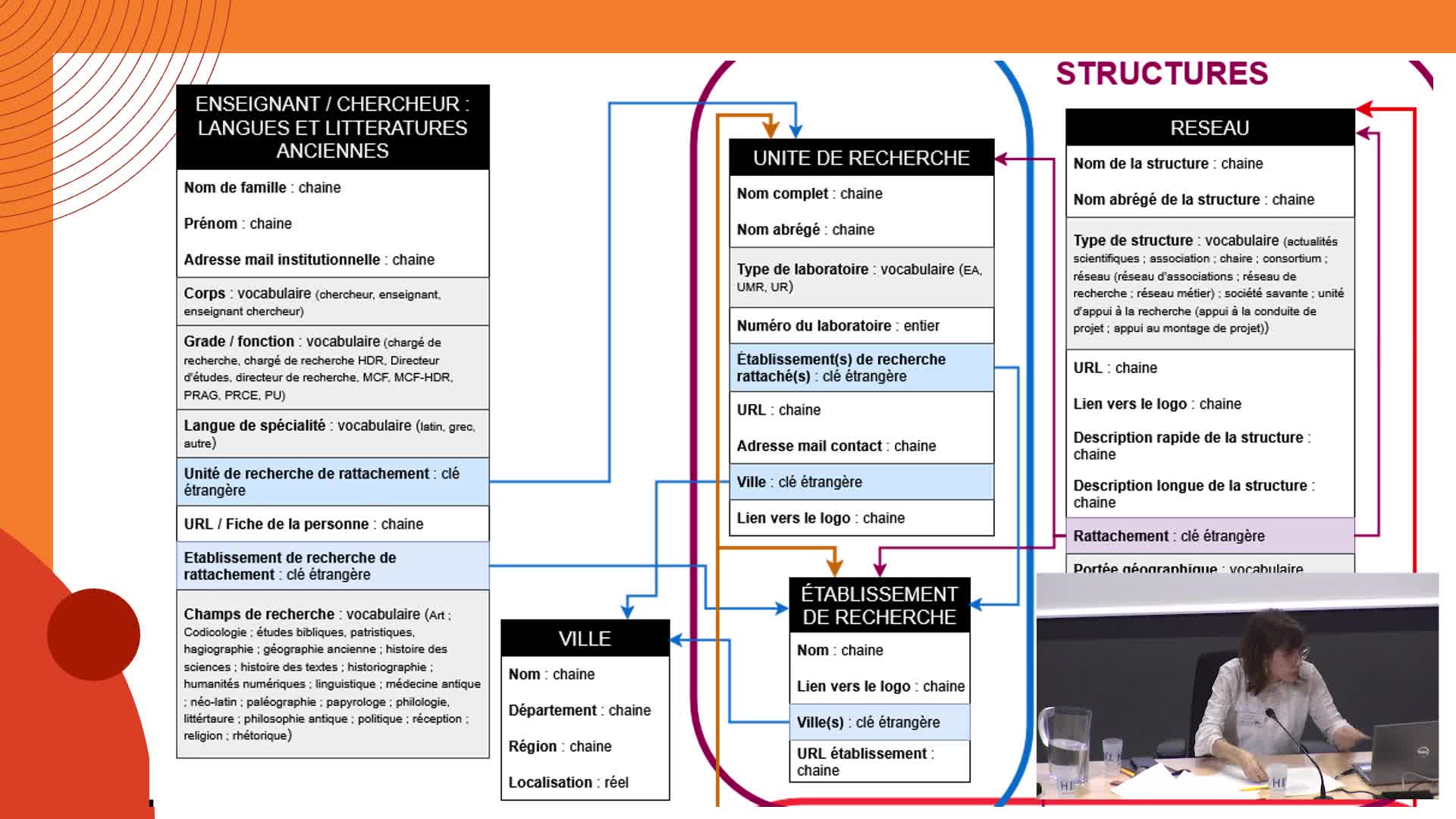Notice
The Templar Citadel of Tartous through Images: Digital Tools to Reveal its Origins and Reconstruct its Topography
- document 1 document 2 document 3
- niveau 1 niveau 2 niveau 3
Descriptif
Lorenzo MERCURI (Università di Roma La Sapienza)
The Templar Citadel of Tartous through Images: Digital Tools to Reveal its Origins and Reconstruct its Topography
La citadelle templière de Tartous, en Syrie, a longtemps occupé une place centrale dans les études sur l’architecture militaire et religieuse des États latins d’Orient. D’abord sous contrôle des comtes de Tripoli, puis confiée aux Templiers, elle présente un système défensif complexe. Si de nombreuses études ont été menées depuis la fin du XIXe siècle, certaines zones du site restent peu documentées ou inaccessibles.
Lorenzo Mercuri propose ici une relecture du site à partir des archives photographiques anciennes — telles que les campagnes photographiques des années 1930 (Armée française du Levant), celles de Jonathan Riley-Smith ou du Deutsches Archäologisches Institut — et de nouvelles technologies numériques (modélisations 3D, relevés topographiques, analyses matérielles). Ces outils permettent d’interroger à nouveaux frais l’évolution du complexe, notamment en identifiant des phases architecturales antérieures aux aménagements templiers, et en les replaçant dans un cadre comparatif plus large.
Ce croisement entre sources anciennes et outils contemporains ouvre la voie à un renouvellement des connaissances sur la citadelle, son rôle stratégique et son inscription dans le tissu urbain médiéval de la côte syrienne.
----------------------------
The Templar citadel of Tartus, in Syria, has long held a central place in the study of military and religious architecture in the Latin East. Initially under the control of the Counts of Tripoli and later entrusted to the Templars, the site features a complex defensive system. Although extensively studied since the late 19th century, certain areas of the citadel remain poorly documented or inaccessible.
In this presentation, Lorenzo Mercuri offers a new reading of the site based on historical photographic archives—such as the 1930s photographic campaigns by the French Army of the Levant, as well as those by Jonathan Riley-Smith and the Deutsches Archäologisches Institut—and new digital technologies, including 3D modeling, topographic surveys, and material analyses. These tools make it possible to reexamine the development of the complex, notably by identifying architectural phases that predate the Templar modifications and by situating them within a broader comparative framework.
This combination of historical sources and contemporary tools paves the way for a renewed understanding of the citadel, its strategic function, and its integration into the medieval urban fabric of the Syrian coast.
Intervention / Responsable scientifique
Dans la même collection
-
Outils numériques et nouvelles approches du monde monastique orthodoxe dans les pays grecs dominés …
VoisinLudivineLongtemps marginalisé dans les études sur le monachisme médiéval et moderne, le monde monastique orthodoxe sous domination vénitienne (à Chypre, en Crète ou à Corfou) reste encore largement méconnu.
-
Vers une prosopographie des manuscrits de l’Orient méditerranéen
CassinMatthieuLe projet ProsopoMOM (Prosopographie des manuscrits de l’Orient méditerranéen), financé par l’équipex Biblissima+, développe une prosopographie en ligne des personnes liées à la production et à la
-
Vision par ordinateur et patrimoine arménien écrit
Vidal-GorèneChahanL’intelligence artificielle s’impose dans l’analyse des corpus textuels, avec des outils de reconnaissance de texte désormais performants, y compris pour les écritures non latines. Au cours de sa
-
Base de données et cartographie. Pour une nouvelle approche des monastères latins dans les États la…
ArtaudFlorianÀ travers son projet doctoral, Florian Artaud propose une relecture des institutions monastiques latines dans les États latins d’Orient, en les abordant sous l’angle de la territorialité. Au cœur de
-
Les humanités numériques au service de l’étude des colophons arméniens
TatessianNicolasDans le prolongement de sa thèse, Les femmes arméniennes : représentations, rôles et pouvoirs à travers les colophons de manuscrits arméniens (1064-1375), Nicolas Tatessian propose de présenter la
-
De la charte à la carte et retour : l’apport du SIG à la compréhension de la documentation sur le p…
DorsoSimonSimon Dorso propose de revisiter la carte du royaume croisé de Jérusalem publiée en 1970 par Prawer et Benvenisti à la lumière des outils des humanités numériques. En croisant sources écrites et
-
Présentation du projet MistraNum. L’usage et l’apport des nouvelles technologies sur le site archéo…
YotaÉlisabethÉlisabeth Yota présente, dans cette communication, un projet de recherche alliant études byzantines et humanités numériques, consacré à l'étude et à la valorisation patrimoniale du site médiéval de
-
The Crusades Regesta: A Database for the Study of the Latin East
GutgartsAnnaBomMyra MirandaDans cette communication, Anna Gutgarts et Myra M. Bom présentent l'histoire et les enjeux de la base de données The Crusades Regesta. Cette base de données, initiée par Jonathan Riley-Smith, est
-
Le portail numérique Φραγκικά-Frankika : un nouvel élan pour l’histoire de la Grèce franque et lati…
TrélatPhilippeVoisinLudivineMeyer-FernandezGeoffreyDans cette communication, Geoffrey Meyer-Fernandez, Philippe Trélat et Ludivine Voisin présentent le portail Φραγκικά-Frankika, un projet de recherche numérique porté par l’École française d’Athènes
-
L’apport des humanités numériques à l’étude des grafiiti dans les lieux saints : prospecter, enregi…
DussartClémentClément Dussart présente, dans le cadre du projet ERC GRAPH-EAST, les apports des humanités numériques à l’étude des graffiti dans les lieux saints de l’Orient chrétien médiéval. Photogrammétrie,
-
Traiter les inscriptions et graffitis de l’Orient latin : l’environnement numérique de l’ERC GRAPH-…
Ingrand-VarenneEstelleDans cette communication, Estelle Ingrand-Varenne présente l’environnement numérique de travail développé dans le cadre du projet ERC GRAPH-EAST (2021–2027), consacré aux inscriptions et graffitis en
-
Edition numérique enrichie et cartographie interactive d’un document inédit : le journal des itinér…
TchakerianSipanaReçues en don par l’INHA en 2017, les archives de Nicole et Jean-Michel Thierry constituent un fonds exceptionnel sur l’art et l’architecture médiévale de la Cappadoce, de l’Arménie et de la Géorgie.
Sur le même thème
-
Causeries Culture - Humanités Numériques, Intelligence Artificielle, littérature et technologies #6
PorlierChristopheBertaniNicolaCauseries Culture - Humanités Numériques, Intelligence Artificielle, littérature et technologies #6
-
Faire une histoire des territoires en contexte montagneux : l’organisation de l’espace par les fonc…
SuméraPaula[séminaire] Faire une histoire des territoires en contexte montagneux : l’organisation de l’espace par les fonctionnaires natifs (tusi 土司) dans la région des monts Wuling (Chine impériale tardive,
-
Vitrail et archéologie. Colloque international. Session 1
Balcon-BerrySylvieCe colloque international, Vitrail et archéologie s'est tenu les 12 et 13 juin 2025 à l'Institut d'histoire de l'Art (INHA), galerie Colbert. Il a été organisé par Sylvie BALCON-BERRY (Centre André
-
Vitrail et archéologie. Colloque international. Session 2
Balcon-BerrySylvieCe colloque international, Vitrail et archéologie s'est tenu les 12 et 13 juin 2025 à l'Institut d'histoire de l'Art (INHA), galerie Colbert. Il a été organisé par Sylvie BALCON-BERRY (Centre André
-
Vitrail et archéologie. Colloque international. Session 3
Balcon-BerrySylvieCe colloque international, Vitrail et archéologie s'est tenu les 12 et 13 juin 2025 à l'Institut d'histoire de l'Art (INHA), galerie Colbert. Il a été organisé par Sylvie BALCON-BERRY (Centre André
-
Vitrail et archéologie. Colloque international. Session 4
Balcon-BerrySylvieCe colloque international, Vitrail et archéologie s'est tenu les 12 et 13 juin 2025 à l'Institut d'histoire de l'Art (INHA), galerie Colbert. Il a été organisé par Sylvie BALCON-BERRY (Centre André
-
Digital Benin: a digital platform connecting the displaced royal artefacts from Benin Kingdom
Digital Benin: a digital platform connecting the displaced royal artefacts from Benin Kingdom
-
Multilinguality and data access: an area studies librarian’s perspective
WagnerCosimaMultilinguality and data access: an area studies librarian’s perspective
-
InVisto : Base de données pour l’histoire du livre et de l’édition vietnamienne en Cochinchine (18…
CaoThúy VyL’histoire du livre et de l’édition vietnamienne en Cochinchine (1890-1945)
-
Comment s’orienter dans la forêt des ressources et des outils numériques ?
BurriInèsAntiqui.TXTes - Sciences des textes anciens
-
Outils numériques et nouvelles approches du monde monastique orthodoxe dans les pays grecs dominés …
VoisinLudivineLongtemps marginalisé dans les études sur le monachisme médiéval et moderne, le monde monastique orthodoxe sous domination vénitienne (à Chypre, en Crète ou à Corfou) reste encore largement méconnu.
-
Vers une prosopographie des manuscrits de l’Orient méditerranéen
CassinMatthieuLe projet ProsopoMOM (Prosopographie des manuscrits de l’Orient méditerranéen), financé par l’équipex Biblissima+, développe une prosopographie en ligne des personnes liées à la production et à la


